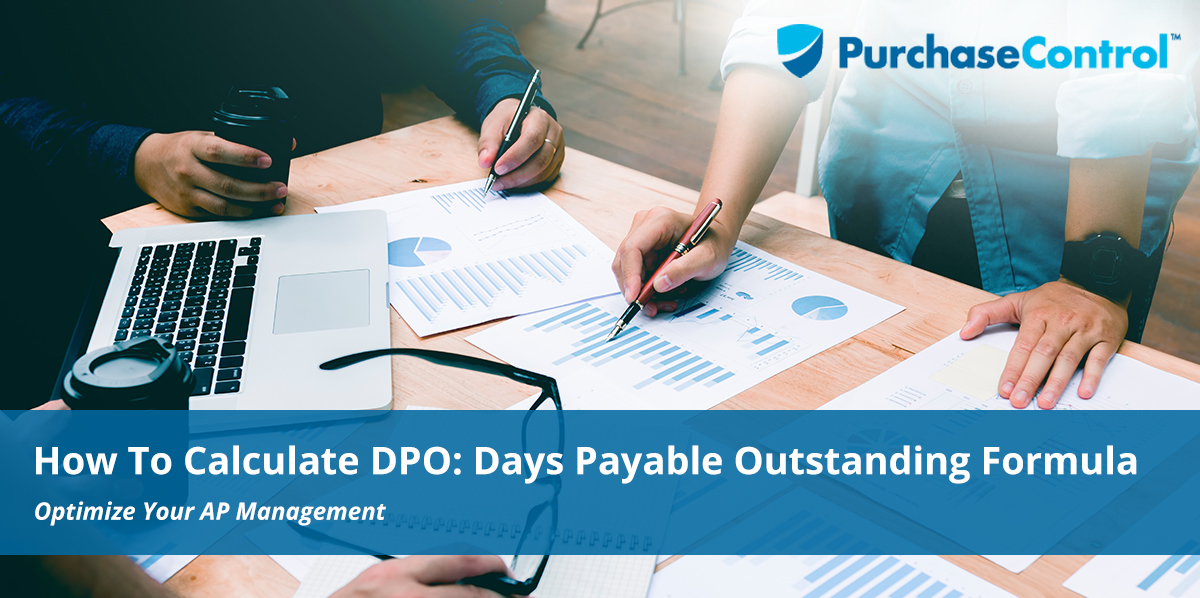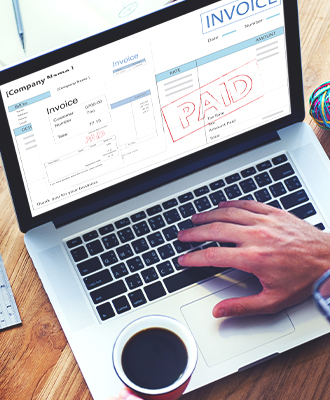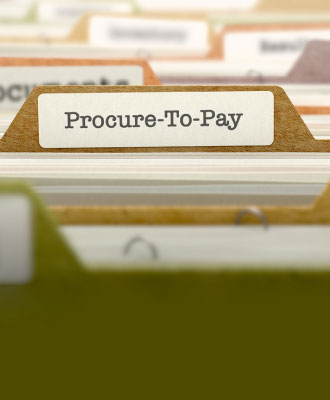Regularly measuring your company’s performance is essential to improving it. And in accounts payable (AP), one of the most effective metrics for tracking your overall efficiency and productivity is days payable outstanding, or DPO. It’s not complicated or difficult, but it can provide you with some valuable insights into your process efficiency and cash cycle.
Taking the time to calculate DPO is an important step in understanding and optimizing all your AP processes.
Why Calculating Days Payable Outstanding Matters
Also known as accounts payable days, or creditor days, the financial ratio we call DPO measures the average number of days your company takes to pay its bills within a given period of time. For example, a DPO of 25 means your company takes an average or 25 days to pay suppliers.
When you calculate DPO, you’ll gain insight into several important areas of accounts payable performance, depending on the results.
Consider these variables:
- A low DPO ratio may reveal your company is relying on a diverse set of creditors who offer short terms. A low DPO doesn’t necessarily mark you as a bad credit risk automatically with current and potential creditors, but it’s important to keep in mind that some creditors may see things that way. This could conceivably lead to offers of less favorable payment terms. Remember too, though, that many other creditors simply use short payment terms as standard operating procedure, so a low DPO isn’t necessarily a reason to panic.
- A high DPO ratio could be a sign you’re taking longer to settle up with your vendors than you have in previous accounting periods. But “longer” isn’t necessarily “too long.” After all, extending your DPO can free up extra cash flow for short-term investments. And while a high DPO might point to issues with maintaining the cash flow required to pay vendors, it can just as easily result from restructuring and other supply chain management tasks, or contract management optimization through negotiation of more favorable terms with your suppliers. The caveat here is that some vendors might have a different definition of “too long” than you do, and withhold additional credit or optimal credit terms if they deem you a slow pay client. As a result, you might be at risk of missing valuable early payment discounts, too, which can start to pinch your bottom line if it’s for high-volume purchases such as raw materials essential to production.
- DPO is a handy cash flow monitor. With an accurate DPO calculation, you can strike an optimal balance between accounts payable and accounts receivable to ensure you have enough cash on hand to cover emergencies or strategic investments but still keep your suppliers happy. For example, you’ll probably find yourself struggling to manage your cash conversion cycle if you operate on a DPO of two weeks but give your own customers 60-day terms.
“With an accurate DPO calculation, you can strike an optimal balance between accounts payable and accounts receivable to ensure you have enough cash on hand to cover emergencies or strategic investments but still keep your suppliers happy.”
Calculating Days Payable Outstanding
To calculate DPO, you need some information from your financial statements and one of two basic formulae.
Formula A:
(Average Accounts Payable ÷ Cost of Goods Sold (COGS)) x Number of Days in Accounting Period = Days Payable Outstanding
Formula B:
Average Accounts Payable ÷ (Cost of Sales ÷ Number of Days in Accounting Period) = Days Payable Outstanding
Note: For Formula B,
Cost of Sales = Beginning Inventory + Purchases – Ending Inventory
and
Purchases = Ending Inventory – Beginning Inventory + COGS
Sample DPO Calculations
To better illustrate how DPO is calculated, let’s take a look at Company X, which has the following entries on its balance sheet for an accounting period of one year (365 days).
| ENTRY | Beginning | Ending | Average |
| Inventory | $3,000,000 | $5,000,000 | $4,000,000 |
| Accounts Receivable | $2,000,000 | $4,000,000 | $3,000,000 |
| Accounts Payable | $500,000 | $1,000,000 | $750,000 |
| Net Sales | $15,000,000 | ||
| Cost of Goods Sold (COGS) | $9,250,000 |
Using Formula A, we can put together this equation:
(750,000 ÷ 9,250,000) x 365 = DPO
.08 x 365 = 29
The DPO using formula A is 29 days (rounded).
Checking our work with Formula B, we see:
750,000 ÷ (9, 250,000 ÷ 365) = Days Payable Outstanding
29 = DPO
The DPO using formula B is also 29 days (rounded).
Considerations When Calculating Accounts Payable Days
To get the best data and the most useful insights, keep these factors in mind when calculating DPO:
- Formalize your process. Many companies adhere to a 365-day year and a 90-day quarter, but if you’re using different intervals to define your accounting periods, remember that consistency and accuracy are what matter most.
- Adjust your DPO strategy based on your needs and goals. Traditionally, the ideal DPO is lowest one that allows for a healthy cash conversion cycle and preserves the cash flow necessary for investment and emergencies. But every business is unique, and your specific goals and capabilities can move the needle up or down accordingly. Huge retailers can have extremely lengthy DPOs; Walmart’s massive presence and market share allow it to negotiate very favorable terms with suppliers, resulting in a DPO of 46 days as of Q4 2019. Some companies, such as Amazon, have an even higher DPO. The online titan had a DPO of 94 days as of Q4 2019, letting them turn cash into investments while delaying their own payments to vendors. Amazon’s financial model, which collects payments from consumers instantly but distributes payments in periodic lump sums, makes this possible.
Very few companies have the clout or the competitive ambition of Amazon or Walmart, but it’s absolutely reasonable and strategic to use your company’s plans for growth, current financial situation, and competitive strength to calculate and pursue a DPO that delivers what your business needs to thrive. - Invest in automation. Collecting, organizing, and managing the data you need to calculate days payable outstanding is much easier with help from a comprehensive, cloud-based procurement solution like PurchaseControl. With automation and artificial intelligence driving continuous improvement through process optimization, procurement software can connect your accounts payable team with procurement to create a powerful source of value for your company.
Fine-tuning your DPO is much simpler with:- Full and transparent transaction data from all suppliers. Beyond DPO, negotiate better terms and discounts, or form strategic partnerships with your best suppliers.
- Advanced data analysis tools that allow you to leverage insights generated from reviewing purchasing data to make smarter, more strategic decisions about DPO and other important payables metrics.
- Less human error, less time wasted on low-value tasks, and more time for your team to focus on strategic development and innovation in defining AP as a value builder.
- An easier way to manage both your cash conversion cycle and your cash flow with ease, ensuring everyone is paid on time (with maximum discounts captured) while you have all the cash on hand you need to drive innovation and expansion.
- Improved supplier relationship management and less risk exposure from potential reputation issues.
Is Your DPO Where You Want It?
It’s only a small, single part of your bookkeeping and overall financial strategy, but understanding how Days Payable Outstanding works and making the changes necessary to get it where you want it will help your business grow, boast a healthy income statement, and compete effectively in today’s market. By regularly measuring your AP performance and taking advantage of tools like automation, analytics, and artificial intelligence, you’ll be well prepared to pay your bills—and manage your cash flow—on your terms.
Automate and Optimize your Days Payable Outstanding—and Much More—with PurchaseControl
Find Out How








